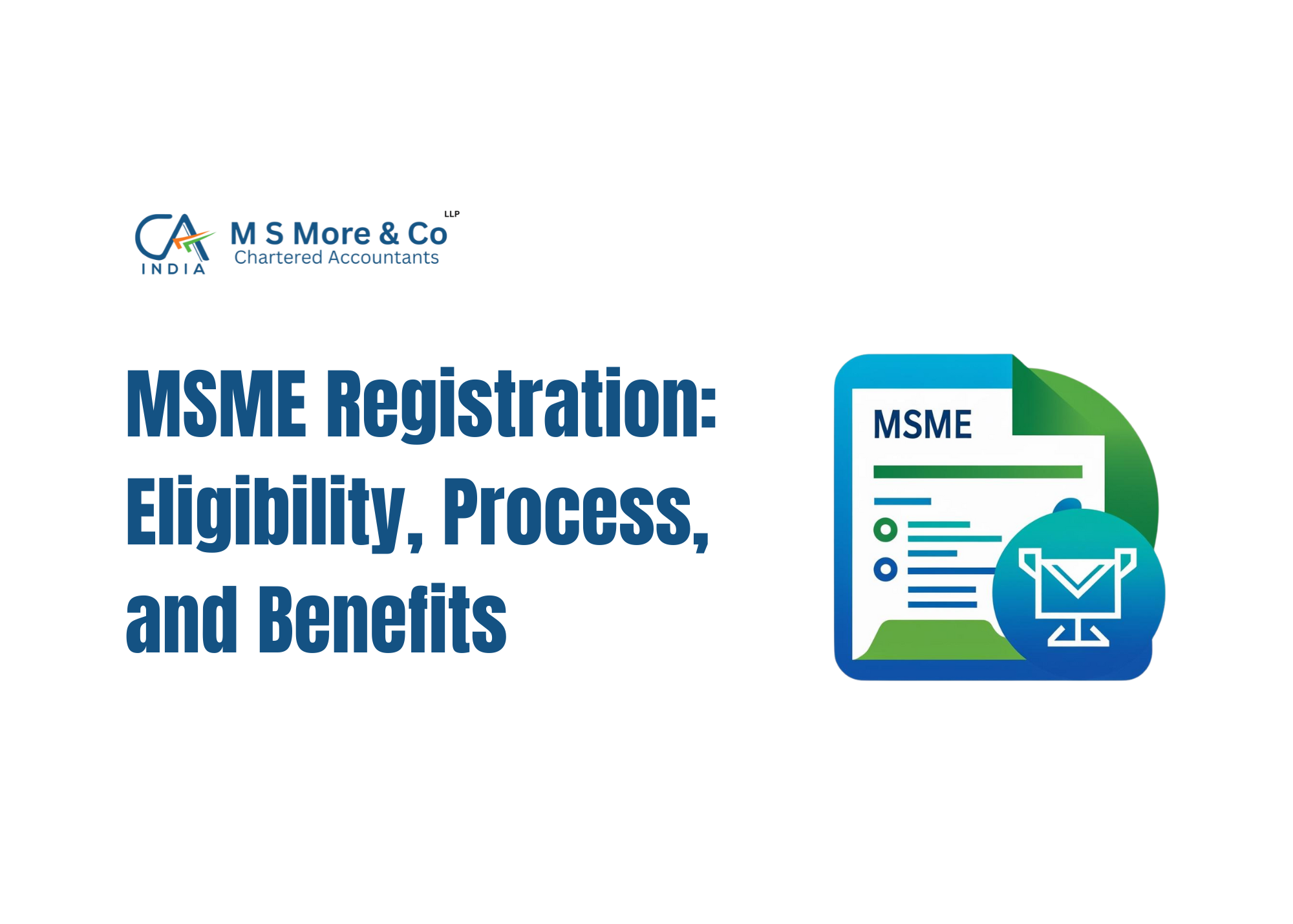Micro, Small, and Medium Enterprises (MSMEs) form the backbone of the Indian economy. They contribute significantly to GDP, employment generation, innovation, and exports. To foster growth and competitiveness, the Government of India has introduced MSME Registration, now officially known as Udyam Registration, which provides legal recognition and access to numerous benefits under various schemes and policies.
1. Eligibility for MSME Registration
Any business entity engaged in manufacturing, production, processing, preservation of goods, or providing or rendering services, excluding activities under the trading of goods, can register as an MSME under the following classification:
| Category | Investment in Plant & Machinery/Equipment | Annual Turnover |
| Micro Enterprise | Up to ₹ 2.5 Crore | Up to ₹10 Crore |
| Small Enterprise | Up to ₹25 Crore | Up to ₹100 Crore |
| Medium Enterprise | Up to ₹125 Crore | Up to ₹500 Crore |
Who can apply:
- Proprietorship firms
- Partnership firms
- LLPs (Limited Liability Partnerships)
- Private Limited and Public Limited Companies
- Hindu Undivided Families (HUF)
- Co-operative societies
- Trusts
- Any other business entity fulfilling the criteria
2. Process of MSME Registration
The registration is completely online and hassle-free through the Udyam Registration portal.
Here’s a step-by-Step Guide:
- Visit the Udyam Registration Portal: https://udyamregistration.gov.in
- Enter Aadhaar Number: The Aadhaar number of the business owner or authorized signatory is mandatory.
- Verify with OTP: An OTP will be sent to the registered mobile number linked with Aadhaar.
- Provide Business Details: Enter PAN, business name, organization type, bank details, and other required information.
- Select NIC Code: Choose the appropriate industry classification code for your business activities.
- Enter Investment & Turnover: Provide self-declared details of plant, machinery, or equipment investment and turnover.
- Final Submission & OTP Verification: Review the details, submit the form, and verify using OTP.
- Receive Udyam Certificate: After successful registration, a digital Udyam Registration Certificate with a unique identification number will be issued.
GST registration is not compulsory for enterprises that do not require a GST registration. However, enterprises that mandatorily need to obtain GST registration under the GST law, must enter their GSTIN for obtaining the MSME Registration or Udyam Registration.
3. Benefits of MSME Registration
Registering as an MSME offers several financial and non-financial advantages:
Financial Benefits
a) Easier Access to Loans
- Collateral-free loans under schemes like CGTMSE significantly reduce the financial burden for MSMEs trying to scale or stabilize operations.
- Banks are more willing to lend to registered MSMEs due to lower risk perception, which increases the availability of working capital.
b) Lower Interest Rates
- MSMEs often get access to priority sector lending, which ensures better loan terms.
- Some banks offer interest concessions up to 1.5%–2% for registered MSMEs compared to standard business loan rates.
c) Subsidies
- Patent Subsidy: Government covers up to 50% of patent registration fees.
- Technology Upgradation Subsidy: Helps MSMEs acquire new machinery or shift to cleaner/greener technologies.
- Industrial Promotion Subsidies: Include financial aid for setting up industrial parks or infrastructure.
d) Delayed Payment Protection
- Under the MSME Development Act, buyers must pay within 45 days, failing which interest at three times the RBI bank rate is payable.
- MSMEs can file complaints on the Samadhan portal, which ensures time-bound resolution.
Tax & Government Incentives
a) Exemption under Direct Tax Laws
- Certain types of income tax rebates and deductions are available, such as presumptive taxation under Section 44AD.
- Depreciation benefits on fixed assets may also be higher.
b) Priority in Government Tenders
- MSMEs benefit from Public Procurement Policy, which mandates 25% of government procurement be from MSMEs.
- EMD Waiver: MSMEs are exempt from paying earnest money deposits in many government tenders.
- Government e-Marketplace (GeM) provides simplified onboarding for MSMEs to supply directly to government departments.
Other Benefits
a) Credit Linked Capital Subsidy Scheme (CLCSS)
- Offers 15% capital subsidy (up to ₹15 lakh) for tech upgrades, especially useful for manufacturing units.
- Focused on upgrading obsolete machinery, improving productivity and reducing production costs.
b) Market Development Assistance (MDA)
- Covers travel and stall rental expenses for national and international trade fairs.
- Helps MSMEs build visibility, form partnerships, and expand their market reach.
c) Enhanced Business Credibility
- MSME registration boosts trust among customers, vendors, and financial institutions, which is especially valuable for new and small businesses.
- It often acts as a pre-qualification in many B2B and B2G contracts.
Conclusion
Registering as an MSME is not just a legal formality—it opens up a spectrum of growth opportunities through funding, protection, visibility, and operational support. For startups, family businesses, or growing enterprises, it can significantly enhance resilience, competitiveness, and compliance in today’s dynamic market environment.

